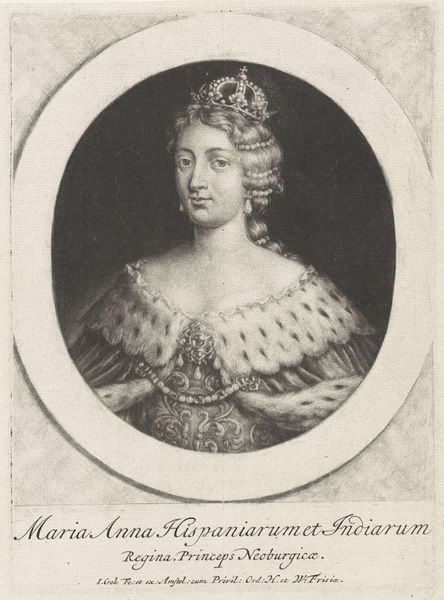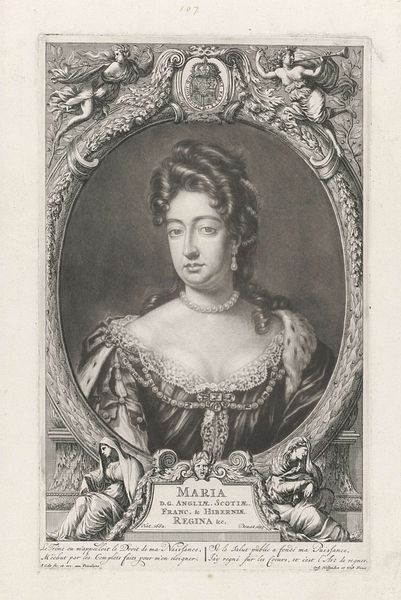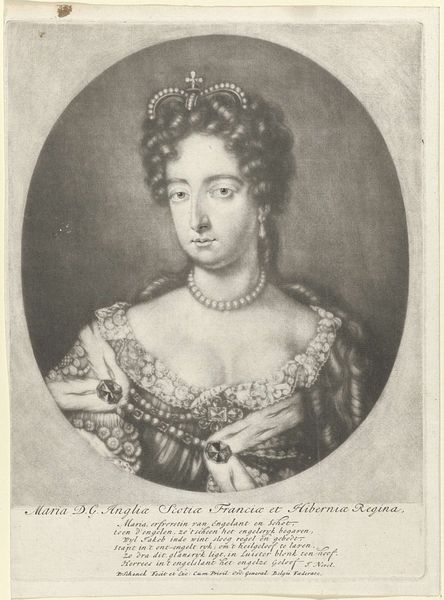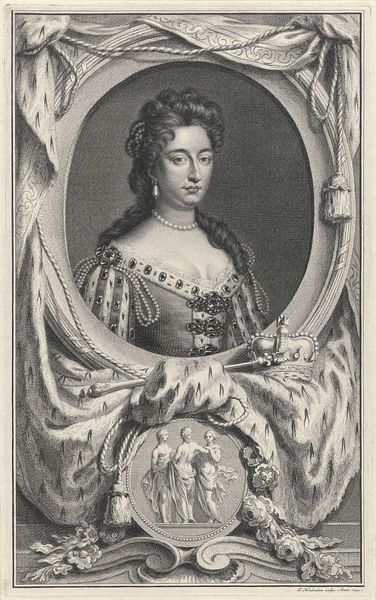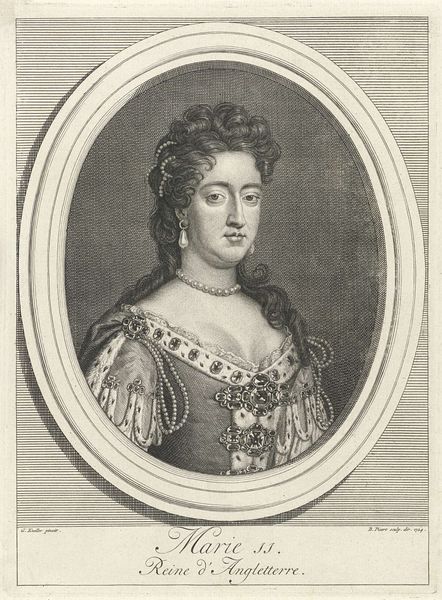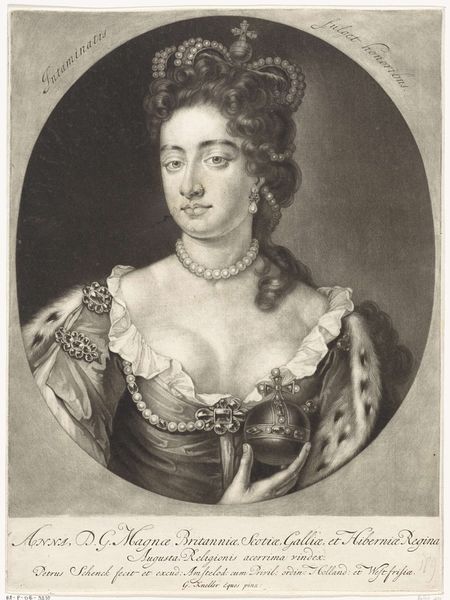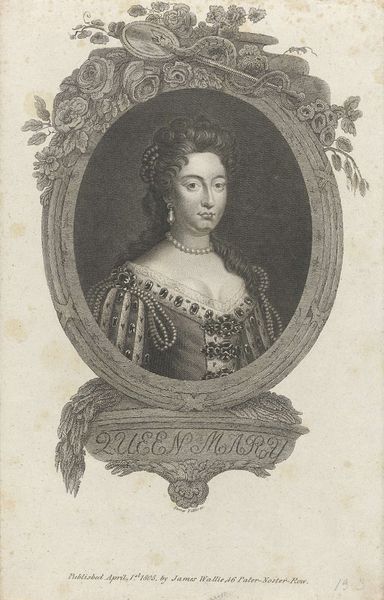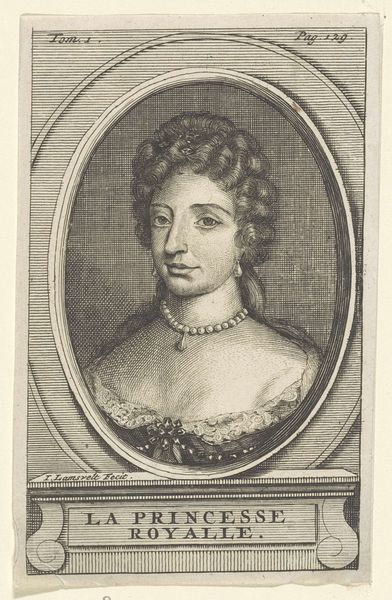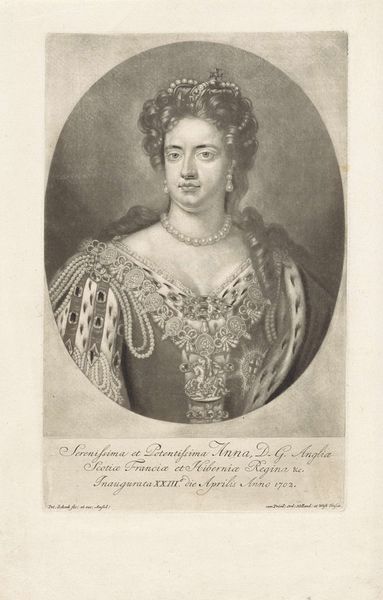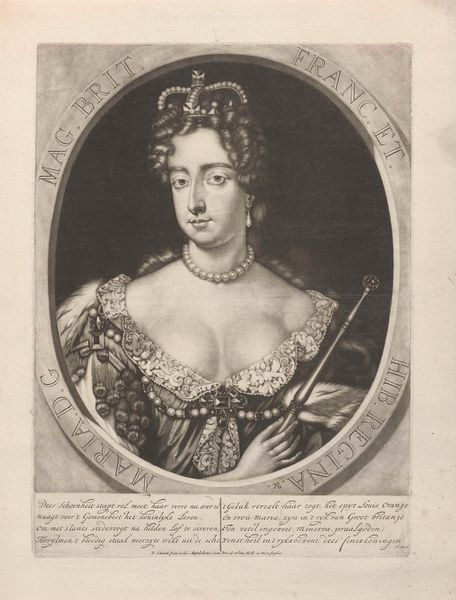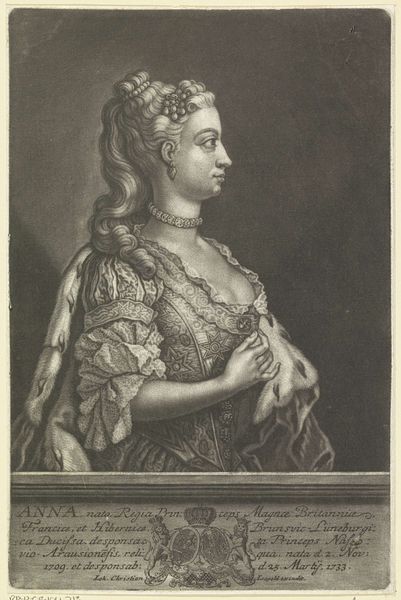
Dimensions: height 210 mm, width 143 mm
Copyright: Rijks Museum: Open Domain
Editor: So, here we have a print, "Portret van Maria II Stuart", made sometime between 1835 and 1918. It's located in the Rijksmuseum. It strikes me as quite formal, even a bit severe. What's your take on this piece? Curator: It's fascinating how this image, created long after Maria II's reign, attempts to project an aura of Baroque power and legitimacy. We see that reproduced imagery plays a crucial role in shaping historical narratives. Consider how prints like these, widely circulated, contribute to the construction of royal identity and public memory. Who do you think was the intended audience, and how might they have interpreted this image? Editor: I imagine the audience would be upper class people and educated folk, probably reinforcing their support of the monarchy through idealizing it. Could it also be pure consumerism, an easily manufactured royal 'selfie' to mass produce for profit and a thirst of knowledge? Curator: Precisely! The market for royal portraits was significant. The level of detail – the crown, the pearls – aimed to impress, reinforcing the grandeur of the monarchy but that comes at the cost of portraying a caricature-esque regal depiction of royalty. Don't you think this creates some conflict between idealised royal power and an average depiction? Editor: I do. It makes me question how much the print is about the person and how much about selling an idea. I'm understanding the purpose is less of an accurate display and more of a message delivery for political effect. Curator: Exactly. Reflect on the socio-political implications inherent in image-making. Historical context is important to our knowledge of it. Editor: Thanks, I never really thought of royal portraiture that way!
Comments
No comments
Be the first to comment and join the conversation on the ultimate creative platform.
